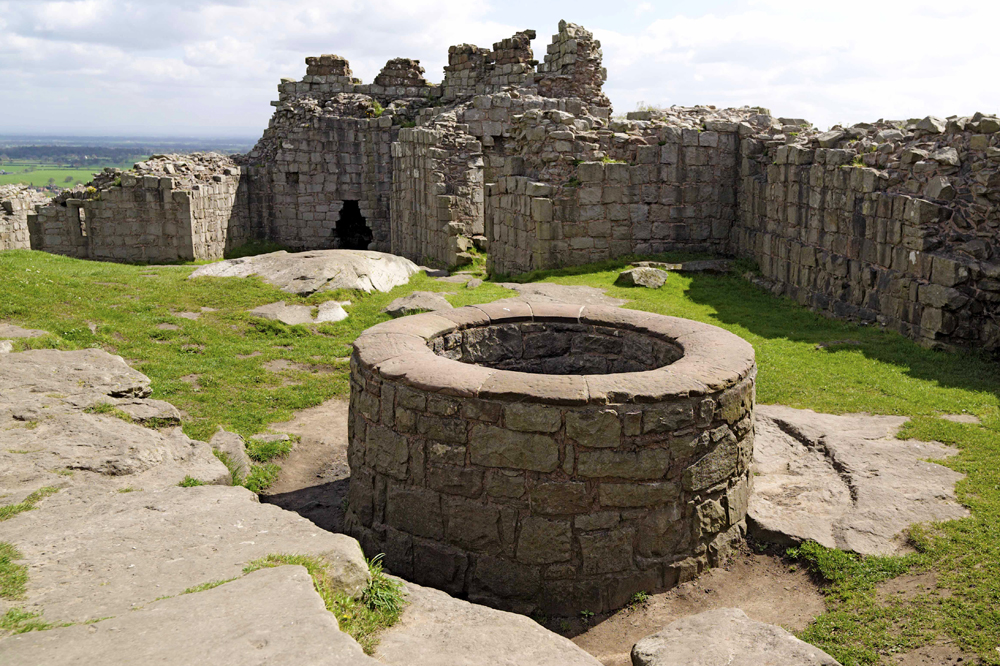Well, well, well!: The medieval well in the Inner Bailey at Beeston Castle is the deepest historical well in England
Cheshire’s central sandstone ridge is composed of several different types of Triassic sandstone.
One of the component sandstones is the aptly named Waterstone. This particularly porous rock acts like a giant sponge, storing up and then releasing water at a steady rate.
Natural springs occur both at the foot of the hills and, occasionally, higher up on the ridge. Wells cut into the soft sandstone are plentiful too. Such a ready water supply meant people could settle virtually anywhere they liked and so farms along the Sandstone Trail tend to be dispersed.
Local Water Supplies
Until piped water arrived just fifty or so years ago, every cottage and farm in this part of central Cheshire relied on their local spring or well for both themselves and their livestock. In times of drought, new wells were dug by local ‘pump well sinkers’; alternatively, poorer cottagers could buy water by the bucket from the local water carrier.
Probably the best known Cheshire well is that within the inner bailey, at the top of Beeston Castle. It’s the deepest historical well in England and cuts down through the sandstone to the water table on the plain below — it’s over 350 feet deep. This masterpiece of medieval engineering must have taken several years to dig.
Other important springs and wells along the Sandstone Trail included Swan’s Well at Manley Common, Pearl Hole at Willington, Beeston Spring below Beeston Castle, Droppingstone Well at Bickerton, and that at Pearl Farm, Tushingham. A search of old maps shows many more.
Mineral Springs
A few so-called mineral springs along the ridge were also widely credited with health-giving powers: in particular Whistlebitch Well in Primrosehill Wood, and Horsley Bath below Peckforton Castle. Finally, a document of 1620 mentions a ‘holy well’ close to Old Saint Chad’s chapel, at Tushingham on the southern section of the Sandstone Trail.
Many of these ancient springs and wells are dry today, their water usurped by a line of pumping stations at the base of the Bickerton hills owned by the Staffordshire Water Board. Water is extracted elsewhere along the ridge for farms, a bottling plant and a brewery.
Over the last few decades the Cheshire water table has fallen dramatically and even the deep, historic, crag-top well at Beeston Castle is dry.


